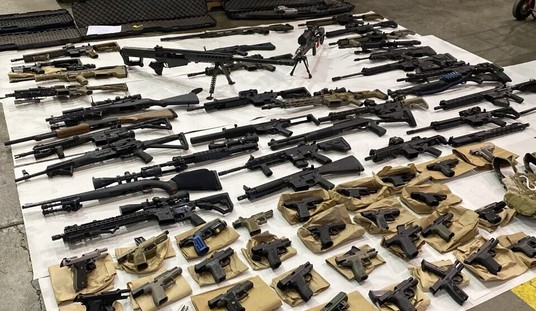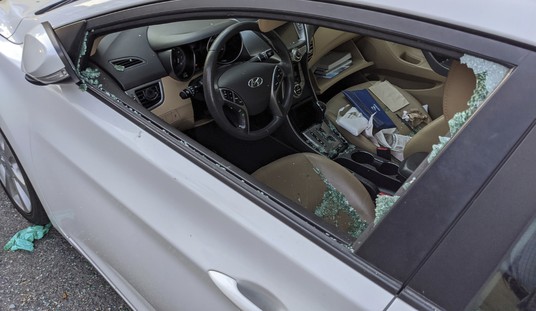Some of us are old enough to recall the days when “Revolver versus Semiautomatic” was debated in the gun magazines at least once a year. Others, including many of today’s younger cops, may have seen but never fired a so-called “wheelgun.”
While the same bullet fired out of a single-action revolver will do just as much damage as if it were fired out of a double-action revolver, the following discussion will be limited to the latter and will assume that such revolvers will be fired in double-action – or, more correctly, trigger-cocking – mode.

While revolvers may have more complicated mechanisms than autoloading pistols, they are simpler to operate, so long as you have the hand size and strength to work the trigger reliably. Not to be overlooked is that the fit of the gun in the hand may benefit from the substitution of aftermarket grips and that the trigger stroke may benefit from tuning by a gunsmith skilled in working on that type of gun. Given those caveats…
Many revolver users are attracted by the fact that the swing-out cylinder of most double-action revolvers allows both visual and tactile confirmation of loaded or unloaded status.
When there is sufficient illumination, this includes being able to see which primers have already been indented – normally a sign that such a round has already been fired – and which ones have not. Don’t take the chamber status too lightly; triple-check by sight and feel. Particularly with the small-frame, five-shot revolvers, the round closest to the frame may not fall free when unloading, making it possible to close the action with an unexpected round in one chamber. And, for those who find it necessary to load and unload a handgun regularly, rounds going in and out of revolver chambers are not subjected to repeated impact with a feed ramp, something that can affect the reliability of pistol ammunition.
While full wadcutter (blunt-end) bullets may not feed readily from speedloaders, the nature of a revolver’s subsequent operation does not make it dependent on bullet shape or power level of the cartridge in order to continue firing. Granted that the cartridge must be one that the revolver was designed to fire, a .357 Magnum revolver, as an example, can be used with anything from a light-recoiling .38 Special target load to a heavy-recoiling .357 Magnum hunting load. And, while reloading can usually be done faster with the use of a speedloader or a cartridge strip, unlike with an autoloader, if you lose your last of these feeding devices, you can still fully load the chambers with loose rounds from a pocket or pouch – a feature that revolvers share with lever-action carbines, available in many of the same chamberings.
Yes, revolvers are slower to reload than autoloaders and, in the case of some malfunctions, may be more troublesome to get back into action. That’s just one of the reasons that I make it a point to carry more than one. It was the predominant use of revolvers on the old NYPD Stakeout Unit that led to the term “New York reload” for the practice of going to a second gun when the first one ran out of ammo. However, my primary reason for carrying more than one is to have at least one accessible to either hand. The one time that I had to draw on a human aggressor, one hand was occupied keeping him from getting his knife into play. Whichever hand that turned out to be, I would have been able to draw and fire with either hand. Thus, before I was able to clear out a pocket for a third revolver, I still felt better equipped with two five-round revolvers on the belt than I would have with one 15-round pistol. An additional gun also provides the ability to arm a companion who may know how to shoot but who may not be carrying.
Most people who opt for a carry revolver these days select one of the five-round models, in .38 Special or .357 Magnum, with a nominally two-inch barrel. I carry three of them myself but they are not beginner’s guns and I had to limit myself to shooting just those guns for a few months in order to master them. In the latter days of revolver “issue” on the NYPD, recruits were encouraged to select one of two revolvers with a nominally three-inch barrel so that they would carry the same gun on and off duty. (It may not be coincidental that the last revolvers issued by the FBI were three-inch S&W Model 13s.)

NYPD had conducted a study that showed no significant difference in “qualification” scores between four-inch and three-inch revolvers but a significant one between the traditional four-inch duty guns and the two-inch models traditionally carried off duty.
I’ve never found out if the two-inch models in the study were of the same medium (six-round) frame as the four inch models. Many people will argue that the advantage of the longer barrel is a longer sight radius. I argue that the longer barrel dampens some of the recoil, making training more pleasant, and that the added mass of the gun helps stabilize it against the relatively long and heavy trigger stroke. The smaller frame size of the five-round guns is often an advantage for female shooters but can pose a greater challenge in the normally larger hands of male shooters.
As to the mass or weight of the gun, I believe that many people err in selecting lightweight models – such as S&W’s Airweight offerings – or ultralight models – such as S&W’s Airlite offerings. My primary reasons were covered in the previous paragraphs but there have also been durability issues with these guns. Regardless of factory rating for +P loads, I keep a supply of a standard-pressure .38 Special load that I have personally tested in a slaughterhouse, in the event that I need to drop an Airweight revolver into a jacket pocket, where a heavier model may cause noticeable sagging. While they are no longer in production, I notice it is much more pleasant to fire such loads from a six-round, K-frame S&W Airweight revolver with a two-inch barrel than it is from a similar five-round, J-frame model, perhaps because the former provides the hand with more contact on the gun.
As to working triggers… Most instructors teach placing the finger so that the groove of the farthest joint comes to the outside edge of the trigger. This is usually not bad advice when the gun is a good fit to the hand. However, when a small-frame revolver is fired in a larger hand, such placement may result in the tip of the trigger finger encountering interference toward the end of the stroke, typically with a thumb of the support or firing hand. I adjust the placement of the finger so that the middle bone is perpendicular to the bore at the moment that the hammer is released. Additionally, after “taking up the slack” in this placement, rather than thinking of moving the trigger to the rear, I make it a point to think of bringing the bone of the finger nearest to the palm down to the rest of the hand. After all, Mother Nature designed the hand to make a fist and I find that this produces a smoother trigger stroke, with less disturbance of the alignment of the bore with the target.
My personal preference is for S&W Centennial revolvers with the fully enclosed hammers as I believe that they will continue to function under a broader range of circumstances than any other handgun. Some stainless-steel Model 640’s were made with three-inch barrels before the introduction of the extended J frame and the .357 Magnum chambering. Sadly, as with several other models of revolvers, if you really know what you want, you may need to spend some time searching the used-gun market to get the one that suits you best. Regardless of whether the hammer is exposed to snag on loose clothing, up close, there is one advantage that revolvers have over autoloaders: If you shove a revolver into your assailant’s body, you can stroke the trigger and fire. Try that with an autoloader and you’re likely to push the slide out of battery, keeping the pistol from firing.








Join the conversation as a VIP Member